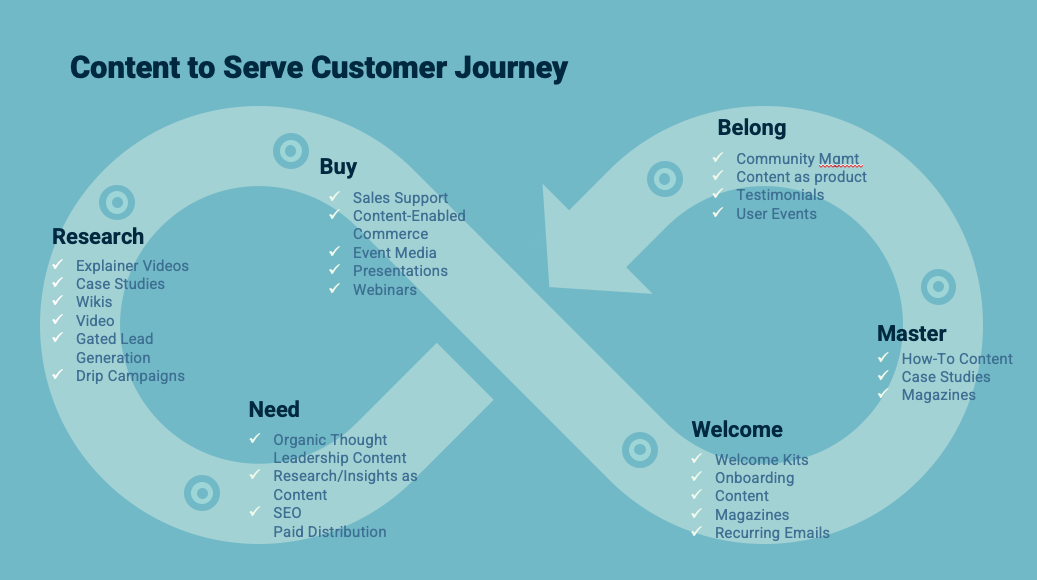



By Megan Hamby, Editorial Director
Last week, I received a call from my son’s day care director: He had been directly exposed to COVID-19 and his class would be closed for two weeks. I was, of course, immediately worried about my son’s health. But, for a moment, I felt overwhelmed at the thought of working from home for two weeks with a 3-year-old.
But when a friend asked if I was taking any time off while my son was home, I explained that I had not even considered it—because I knew Hammock would be flexible with my schedule. There were no complaints from my coworkers when my new 3-year-old intern joined the weekly Zoom staff meeting, or uproar when I needed to step away for an hour or so to prepare lunch and get him ready for naptime. We did what we always do: We adapted to the situation at hand.
When COVID-19 forced us to switch to a work-at-home arrangement in March 2020, we adapted to Zoom meetings and Basecamp chat messages. When a client asked us to press pause on all previously planned content last year and focus instead on coronavirus-related content, we quickly switched gears and developed a new content plan. Over the past year and a half, we have helped our clients rethink in-person events and conferences; change their content strategies; and build relationships with their customers.
Flexibility has long been part of our work culture at Hammock—even before the pandemic. For example, I worked at home two days a week before it became mainstream. One of our project managers even works in another state! I believe this culture of flexibility and adaptability is part of what has made us efficient at responding to our clients’ changing needs. We don’t let challenges get in our way—we simply find a way to work around them.
But flexibility in itself―in scheduling, physical work location, technology use or anything else―is not enough if you don’t have the fundamental skills in place to do the job the right way in the first place. At Hammock, as we have weathered moves, personnel changes, shifting economic conditions and more, we have never abandoned our core principles and skills. Even before the pandemic, we had the processes and platforms in place to help our clients succeed and achieve their goals. We have always been storytellers at heart, and what we excel at is learning our clients’ “stories” (and bits of hard-earned wisdom) and helping communicate them to a target audience in the most relevant and useful way possible.
We’re not the only ones who have adapted, of course. We have learned from others, and we hope that others have learned from us. And while adapting while staying true to your purpose can be a bit of a balancing act, we believe that we have found the right balance. If we can help you adapt to these continually challenging times, please reach out to us.
Photo: Getty Images
About Hammock Healthcare Idea Email | This post is part of Hammock’s award-winning Idea Email series. Idea Emails are sent every other week and share one insightful marketing idea. Idea Email comes in two flavors: Original and Healthcare. To subscribe to the original Idea Email (general marketing ideas), click here . To subscribe to the Healthcare Idea Email (healthcare marketing ideas), click here.

By John Lavey | Hammock President and COO
This week 26 years ago, I moved to Nashville. My first job here in town was as a healthcare reporter. Let me say that healthcare as a beat is a massive undertaking for anyone to cover adequately, but particularly someone without experience in the industry. I moved from covering school board meetings to covering the most dynamic industry in our city.
In those early days, I would read about some specialized segment of the industry, say physician practice management, then go and conduct an interview with a CEO of the leading company in that space. To say I was outmatched and outgunned is an understatement. Like a lot of young people, I didn’t know what I didn’t know.
After a few years, I went to business school at night to understand more about the business of healthcare. More than 20 years later, the experience I’ve gained and the schooling I’ve had make healthcare more comprehensible, but healthcare remains a dynamic and complex business. At least now, I know what I don’t know.
Building a content company that serves the healthcare market is fueled by the fact that we know what we don’t know. Our team of experienced healthcare content professionals possesses a great deal of domain expertise. The value we deliver to clients is based on the acquisition of expertise in the areas where more specialized knowledge is required. For Hammock, that means we work with a whole host of contractors and specialists.
People come to us because we understand their space. But our clients remain the experts in what they do. We assist them in developing content to support their business objectives. Our best relationships are based on this mutual understanding and respect for each other’s specialized knowledge and expertise.
Do you know what you don’t know about how to maximize your healthcare business with content marketing? Let us know.
Image: Getty Images
About Hammock Healthcare Idea Email | This post is part of Hammock’s award-winning Idea Email series. Idea Emails are sent every other week and share one insightful marketing idea. Idea Email comes in two flavors: Original and Healthcare. To subscribe to the original Idea Email (general marketing ideas), click here. To subscribe to the Healthcare Idea Email (healthcare marketing ideas), click here.

By Rex Hammock, CEO
For the past few weeks, I have been reading about what marketers have learned throughout the COVID-19 pandemic. One of the most insightful articles I’ve read was “10 Truths About Marketing After the Pandemic,” written by Janet Balis and published in the Harvard Business Review.
Balis, the customer and growth market leader and marketing practice leader at EY Americas, does a great job of explaining how marketers—especially content marketers—are having to adjust their relationship to customers. In her article, she identified 10 ways in which the pandemic has challenged truths about marketing and given us new rules to move forward. Here, I’m highlighting three of those old truths and new rules.
Old Truth: Customers must sit at the heart of your marketing strategy.
New Truth: Customers must sit at the heart of your customer journey.

We write a lot about the customer journey—because we know how important it is. Imagine an infinity loop to show a customer’s life cycle. With the right content marketing, you can help prospects become leads, convert them to customers, and focus attention on them so you create a loyal relationship.
Old Truth: Relationships matter.
New Truth: Relationships are everything.
“It goes without saying that it is vital to build relationships with customers founded on trust,” Balis wrote.
In March 2020, Edelman conducted a global consumer study and found that 60% of people were turning more and more to the brands they were absolutely sure they could trust. Why? According to Richard Edelman, CEO of Edelman, trust is a “game changer for brands because it addresses people’s fears about personal safety, most notably vulnerability on health, financial stability, and privacy.”
That’s why it’s critically important to form genuine connections with your customers, listen to their needs and opinions, and help them find solutions for their problems. Without your customers, your business would not exist.
Old Truth: Marketing is important for growth.
New Truth: Marketing is at the center of the growth agenda for the full C-suite.
We’ve noticed this to be true with several of our clients. As Balis said, “marketing has been elevated within the C-suite as a driver of digital transformation, a key leader of the customer journey, and the voice of the consumer—all of which are of paramount importance to other functional leaders.”
A 2019 report from McKinsey & Company suggests that high-growth companies are seven times more likely to have a chief marketing officer who fosters robust and collaborative partnerships across the C-suite. Why? Because the CMO makes sure that the rest of the C-suite understands how marketing is driving growth and serving the company’s broader goals and objectives, the report says.
Takeaway: Balis said it best: “Marketing now has the opportunity to seize an ongoing central role in the dialogue, thereby driving the organization’s broader growth and innovation agenda.” To read the full article, and Balis’s seven other new rules, click here.

By John Lavey | Hammock President and COO
I heard a great question this week from a prospective client: Why do customers choose you and why do they stay with you?
It’s a great question because the person who asked it recognized the fundamental value of how a relationship works. A good business partner offers more than what you sought them out for in the first place.
Developing recurring content, across a variety of media, to support a business objective typically requires skill sets that are too specific and too expensive to replicate in-house.
Most healthcare companies that want to do content marketing need a partner with the subject matter expertise, team, processes and experience to help.
In many cases, they are looking for a partner because they’ve come to the conclusion that they can’t justify the investment in-house. So they see it as a replacement for a full-time equivalent (FTE) or FTEs.
But long-term relationships are much more than a replacement for an FTE.
Sure, with the right partner, clients find that they are able to focus on projects and other priorities that serve their core business. And the clients understand that a professional process makes it easier on their team.
But there is deeper, more fundamental value when you find the right outside partner. You have an extension of your team that is focused on serving your customers and prospects, just like you are, with solutions that perfectly position your brand.
A good outside partner can serve as a sounding board, and constantly challenge you to focus on the audience’s concerns, and not corporate speak.
The right outside partner’s access to domain expertise is valuable for helping you hone your message.
And the right outside partner starts to show you all the ways content plays a role in moving healthcare customers through their journey, such as building presentations for sales or investor groups, developing training videos, or helping improve their client conferences, to name a few.
Finding the right partner means looking at the reasons they are the right fit for right now, but also for next year and the years to come.
About Hammock Healthcare Idea Email | This post is part of Hammock’s award-winning Idea Email series. Idea Emails are sent every other week and share one insightful marketing idea. Idea Email comes in two flavors: Original and Healthcare. To subscribe to the original Idea Email (general marketing ideas), click here. To subscribe to the Healthcare Idea Email (healthcare marketing ideas), click here.

By Rex Hammock, CEO
“All businesses are media businesses.”
I’ve heard versions of that claim for decades. But what does it mean in 2020?

By Rex Hammock, CEO
Recently, I broke up with my cable provider. It wasn’t my intention to break up. I have been using the same provider since 1986. However, after a hassle over internet access, cord-cutting and the inability to communicate with a series of customer service employees, I had no other option than to start all over with a different approach. So I cut the cord and created my own bundle of services and features. For me, the solution to have a cable-free, internet approach has worked perfectly.

By: John Lavey | Hammock President/COO
Google reports that 7% of its searches are health-related. This adds up to 70,000 searches a minute. That’s a lot of time consumers are spending looking for help before taking action.
We know providers and payers also have a voracious appetite for helpful content. Those companies typically have nine people involved in a purchasing decision of any healthcare IT solution, and they report spending much of a yearlong sales cycle doing research before ever entertaining a sales professional (2018 HIMSS and Content Marketing Institute survey).

By Rex Hammock, CEO
Customers don’t just purchase products and services—they purchase solutions and outcomes. Offering your marketplace the shiniest new object is no longer enough. You must provide the best product, as well as a platform that supports it with the best service and explanatory content and media.
But that’s not all. Once a customer owns your product, they’ll want more knowledge and insight into how that product can best serve them. They’ll also expect ongoing training, certification and continuing education.

By Rex Hammock
The first time I wrote about podcasting was 14 years ago, on September 29, 2005, on RexBlog.com. The day before, a Google search for the word “podcasts” turned up only 24 results. “I can see magazines, associations, churches, schools and companies utilizing podcasting to distribute regular audio content to their audiences,” I wrote. In other words, I was enthusiastic about the future of podcasting. And, despite a constant stream of predictions from “experts” that “podcasting is dead” (not to be confused with podcasts about death), I still believe the golden age of customer-focused podcasting is before us.